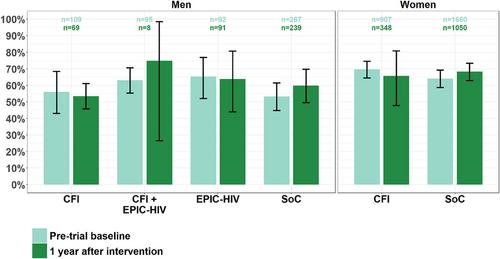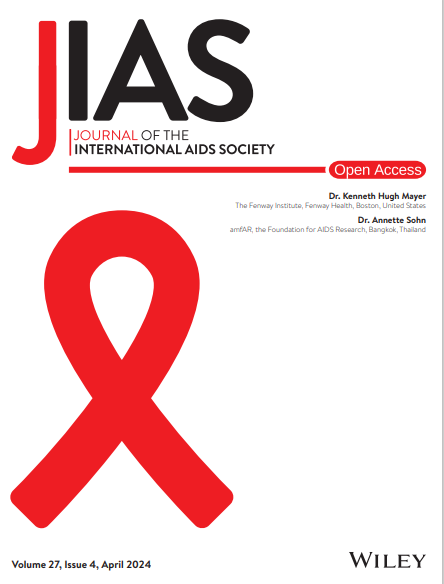In South Africa, the HIV care cascade remains suboptimal. We investigated the impact of small conditional financial incentives (CFIs) and male-targeted HIV-specific decision-support application (EPIC-HIV) on the HIV care cascade.
In 2018, in uMkhanyakude district, 45 communities were randomly assigned to one of four arms: (i) CFI for home-based HIV testing and linkage to care within 6 weeks (R50 [US$3] food voucher each); (ii) EPIC-HIV which are based on self-determination theory; (iii) both CFI and EPIC-HIV; and (iv) standard of care. EPIC-HIV consisted of two components: EPIC-HIV 1, provided to men through a tablet before home-based HIV testing, and EPIC-HIV 2, offered 1 month later to men who tested positive but had not yet linked to care. Linking HITS trial data to national antiretroviral treatment (ART) programme data and HIV surveillance programme data, we estimated HIV status awareness after the HITS trial implementation, ART status 3 month after the trial and viral load suppression 1 year later. Analysis included all known individuals living with HIV in the study area including those who did not participated in the HITS trial.
Among the 33,778 residents in the study area, 2763 men and 7266 women were identified as living with HIV by the end of the intervention period and included in the analysis. After the intervention, awareness of HIV-positive status was higher in the CFI arms compared to non-CFI arms (men: 793/908 [87.3%] vs. 1574/1855 [84.9%], RR = 1.03 [95% CI: 0.99−1.07]; women: 2259/2421 [93.3%] vs. 4439/4845 [91.6%], RR = 1.02 [95% CI: 1.00−1.04]). Three months after the intervention, no differences were found for linkage to ART between arms. One year after the intervention, only 1829 viral test results were retrieved. Viral suppression was higher but not significant in the EPIC-HIV intervention arms among men (65/99 [65.7%] vs. 182/308 [59.1%], RR = 1.11 [95% CI: 0.88−1.40]).
Small CFIs can contribute to achieve the first step of the HIV care cascade. However, neither CFIs nor EPIC-HIV was sufficient to increase the number of people on ART. Additional evidence is needed to confirm the impact of EPIC-HIV on viral suppression.



